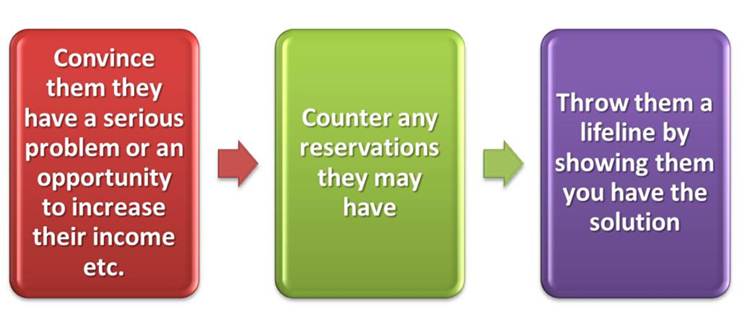Entries Tagged 'copywriting tips' ↓
February 15th, 2012 — b2b copywriter, b2c copywriter, copywriter, copywriting tips
Writing sales and marketing copy isn’t as easy as it sounds.
Granted, you know your business and product/service inside out and every which way, but that is often the problem.
To write great copy you have to put yourself in the shoes of your customers. But when you’re writing about your own products and services that can be really tough.
That’s why it really pays to get an expert in and hire a good copywriter.
In an instant you will have access to a wealth of experience and expertise. Someone who knows how to position your product/service, which buttons to press to make people buy, and how to get the most out of your sales materials.
So how can you be sure you’re hiring the right copywriter for you?
Well, let’s look at it this way, if you were looking for a builder to build an extension to your house you’d probably ask for personal recommendations from friends and colleagues, you’d ask to see what other work they’d done, you’d want to make sure you paid a competitive rate – because you only get what you pay for – and you’ll take time to talk with them to see what they’re really like.
The same goes for finding a great copywriter.
The dos and don’ts
1. Avoid job boards
Great copywriters won’t be trawling job boards for work. If they’re good they will have people knocking down their door for their expertise and won’t be traipsing the streets trying to find their next job.
The best place to look is Google. Your copywriter doesn’t have to be local to you (I’ve worked with companies as far afield as Trinidad and Tobago) so make an extensive search to ensure you get the right person for you.
2. Samples
Don’t be afraid to ask to see samples of their work. But don’t be put off if their portfolio doesn’t show anything exactly like you’re looking for or an example from your industry.
News flash – a good copywriter doesn’t need experience in a particular field to write about it. You are the expert in your company; your copywriter is the expert in getting that information across to your reader.
3. Pay competitive rates
It’s true – you only get what you pay for.
Plus, don’t expect to pay by the hour.
If you hired your gardener to mow your lawn and tend to your flower beds you would pay them for that work. If you paid them for 2 hours work, they may not get through everything so you wouldn’t get what you wanted.
Most copywriters will provide you with a fixed fee based on the nature of your project.
If you want an excellent job you’re going to have to pay for it – but that’s why you hired in an expert, isn’t it?
4. Talk to them
Pick up the phone and have a chat with them. Suss them out and see if they are the type of person you could work with.
5. Agreement
Once you’ve made your choice, get a written agreement that clearly states what they will do for you and what you will provide for them. That way everyone knows where they stand.
Don’t forget, when hiring a copywriter you are not paying for their time. You are paying for their experience and expertise.
February 6th, 2012 — blogging for business, Content marketing, Content writer, copywriting tips
What’s the Point of Content Generation?
You all know how important it is to produce a continual stream of content.
But under no circumstances is that content to be a blatant sales pitch.
What? I can’t sell? Then what’s the point?
If you generate content that is just all about selling, no one is going to read it and people will be turned off your company because of it.
But, if you generate content that is full of cracking information that people love, you’ll draw them to you. Mind you, just because you can’t directly sell through your content doesn’t mean you can’t use it to gently persuade them to take a specific action.
What I’m talking about here is to get your reader to do something you want them to do (other than put pounds in your till), such as signing up for your newsletter, downloading your latest report or white paper, following you on a social media platform (e.g. Twitter, Facebook, Google+) or subscribe to your blog RSS feed.
By giving them information in exchange for a relatively minor thing (well, minor in their minds), you can enhance and build your relationship with them.
How to get them to do what you want them to do
There are 2 ways to achieve your goal:
- Through your readers’ fear
- Through your readers’ desires
What do I mean?
Well, everyone is motivated either by having a problem they need to solve, or wanting something that’s going to improve their life, income or general well-being.
In either case, the method to go about convincing them you’re the company they need is to use the following format:

First, convince them they have either a serious problem (this will be particularly relevant if you are a company that helps solve problems) or that they will greatly benefit from you. For many companies, they will fall into both categories, i.e. being a problem solver and a benefits giver.
Secondly, you must counter any potential objections the reader may have, such as price etc.
Thirdly, once you’ve established the fear or desire the reader is feeling, you can offer your product/service as the life line they’ve been looking for.
So, there you go.
Every piece of content you produce must convince your reader to do something, but without overtly selling to them.
Next time you write a blog post, create some web copy or post on a social media platform, think about what you want to achieve from your writing and make sure it has a purpose.
Over to you
Does your content always have a purpose?
Have you found any great methods that work for you?
Leave a comment below and share your successes.
Sally Ormond, Copywriter
January 30th, 2012 — copywriting tips, Leaflet copywriting, marketing
 This article was supplied by Printed.com, suppliers of unbeatable quality digital flyer printing, and a shortlisted company for this year’s industry leading Print Week Environmental Company of the Year 2011 award.
This article was supplied by Printed.com, suppliers of unbeatable quality digital flyer printing, and a shortlisted company for this year’s industry leading Print Week Environmental Company of the Year 2011 award.
The author’s views are entirely his own and may not reflect the views of FreelanceCopywritersBlog.com. If you are interested in producing a Guest Post for this blog, please get in touch with your ideas.
A flyer campaign can offer a high return-on-investment due to its ability to reach a targeted demographic with a specific, relevant message. Once you have written your flyer, or flyers, the main issue is how and where to distribute them for maximum effect.
Like everything else, the business world is dependent on the written word to communicate information about its products and services. No matter how many thousand words a picture is worth, text isn’t going out of fashion: there is simply no substitute for a paragraph, page or book of words to get your message across. Your own flyer is a case in point: flyers are an outstanding way to deliver a simple, brief and accessible pitch to potential customers. Although images can add a great deal to them, flyers stand and fall on the quality of their text.
Flyers as a calling card
Whilst the text on any flyer is critical, it takes on a new relevance when the service you are promoting is text-based. Here your flyer presents an additional opportunity and pitfall; it is not just what you are saying, but how you are saying it that will make an impact. As a copywriter, editor, proofreader, advertiser, scriptwriter, bid writer (the list goes on), the quality of the text on your flyer as well as the service itself will form a vital part of attracting new clients. At the most simplistic level, you have to be absolutely obsessive about detail; if you are offering a copywriting service, for example, your potential customers will not have much confidence in you if your flyer is littered with minor errors – something that might be forgiven in a different industry. Conversely, if your flyer is well designed and laid out, and the text is compelling and letter-perfect, this in itself serves as an advert for the service you are offering. The flyer is an advert and portfolio sample in one.
Distributing your flyers
Once you have identified a need or niche, and composed your flyer accordingly, you need to make sure it reaches the right people. One of the biggest advantages of a flyer campaign is that they can be used to target certain demographics. Local businesses with a broad appeal (such as a restaurant, for example) might benefit from distribution to a particular post code. Other services, probably including your own, will require a different approach.
Fortunately, this is relatively easy with a little research. You will know from experience that flyers are distributed in a variety of ways – direct to your door, in magazines and other publications, and displayed in public places. The only task is to establish which of these are most relevant to your business and will provide the best ROI. That way, you need send out comparatively few flyers, knowing that the people they reach are likely to be interested in the service you provide. Specialist and trade publications are a good place to start, since you know that these are industry-or interest-specific. You may also be able to purchase mailing lists of people who have used or expressed interest in similar services in the past.
Conclusion
Some forms of advertising (such as newspaper ads or radio commercials) aim to reach a large number of people representing a cross-section of the population. Consequently, this is best for businesses that have a broad appeal. Flyers, on the other hand, typically reach a smaller number of people with a specific message that – with a little research – can be tailored to their needs. This is why a flyer campaign can offer such a high ROI: flyers are very cheap to produce, and can be sent to the people who will most likely respond well to your message. For a text-based service, there are a wide range of opportunities to distribute your flyer to potential and relevant customers, due to the large number of publications aimed at different business sectors.
January 25th, 2012 — copywriting jobs, copywriting tips
When starting out as a copywriter, there is one question that always remains firmly in your mind – how on earth do I price my services?
Many make the mistake of choosing the option of charging for the time it takes to write the copy. But hourly (or even daily) charging doesn’t really cover the full picture.
Let me explain:
- If you were looking to hire a builder you wouldn’t expect to pay by the hour
- If you went to a plastic surgeon you wouldn’t pay by the hour
Why?
Because it’s their experience, expertise and talent that you are paying for, not the length of time it takes for them to complete the task. That’s why you are willing to pay them for the end result.
Charging for the difference you make
A company will seek out a copywriter because they need expert help. They are looking for someone to:
- Turn their business around
- Generate more sales
- Attract more leads
- Increase the number of visitors to their website
Therefore, you must base your charges on the difference it will make to your client.
It doesn’t matter if it only takes 2 hours to write a cracking sales letter, but what does matter is the 80% boost in income that sales letter will generate.
Copywriting, as with the other elements of marketing, is an investment – the client pays for the output and results your work produces, i.e. for your experience, expertise and aptitude.
Better for the client
If you are still struggling with the concept of not being paid for your time, think of it this way – by coming up with a fixed fee for the project (based on the brief, your considerable experience and talent and the difference it will make to your client) your client will be happy because they will know exactly how much the job will cost.
Just make sure you clearly show in your proposal exactly what is covered within the quoted fee (e.g. number of revisions, meetings etc.) so everyone knows where they stand.
Over to you
How do you feel about pricing?
Do you have a method that reflects the quality of your writing?
Have your say by leaving a comment below.
January 23rd, 2012 — copywriting tips, Leaflet copywriting
 This article was supplied by Printed.com, suppliers of unbeatable quality digital leaflet printing, and a shortlisted company for this year’s industry leading Print Week Environmental Company of the Year 2011 award.
This article was supplied by Printed.com, suppliers of unbeatable quality digital leaflet printing, and a shortlisted company for this year’s industry leading Print Week Environmental Company of the Year 2011 award.
The author’s views are entirely his own and may not reflect the views of FreelanceCopywritersBlog.com. If you are interested in producing a Guest Post for this blog, please get in touch with your ideas.
Leaflets are a great way to drum up some business, assuming the content is up to scratch. However, writing effective copy for your leaflets is quite a skill.
Leaflets are an excellent way of targeting a particular area or demographic with details of your business, and flyer printing is a cheap and simple process thanks to advances in digital printing. However, simply putting together a leaflet and sending it out isn’t enough. Your content has to sparkle in order to grab the attention of your readers and raise it above the level of the dozens of other leaflets they will encounter on a regular basis.
Before you start…
To begin with, there are two general principles you should remember. One is that attention to detail is really important. When you have finished writing your leaflet copy, check it, re-check it and check it again. Then get someone else to read your leaflet. Printing thousands of substandard flyers isn’t going to do you any favours, as spelling and grammatical mistakes make you look lazy – and if you can’t be bothered to proofread a flyer, why should the customer have any confidence that you will pay them the attention they need? The other principle is not to over-stuff your leaflet with too much information or extraneous text. Readers don’t want to plough through any more than they have to.
1. Grab the attention
Flyer printing is an excellent way to access new customers, but you need to engage them straight away. Don’t leave your best material for the end of the leaflet. You need to grab their attention in the opening words – since these are all that many people will read. Most customers will take just a few seconds to assess your leaflet, before deciding to keep it or throw it away. In addition, if your leaflet is displayed alongside others in a rack, the first third or so is all that casual onlookers will see. You need something to make them pick it up. Have a look at other leaflets to see which achieve this and which fail. Images are sometimes good, and digital printing means you can include colour pictures at a relatively low cost. Nevertheless, make sure they add to rather than distract from your leaflet’s message.
2. Draw them in
Having gained your potential customer’s attention, you need to prompt them to consider your business or service further. A good way to do this is to ask a question that has particular relevance for them, and then offer the solution. Readers don’t want or need to know all about your business; what they want to know is what it can do for them. All the detail in the world won’t help you to make a sale or gain a client if they can’t see how it relates to their needs. So, put yourself in a potential customer’s position and write your leaflet copy accordingly.
3. End with a prompt
Finally, make sure you end your leaflet with a ‘call to action’ – a little encouragement to your audience to take the next step and get in touch, visit or find out more. Needless to say, make sure that they have all the information they need to do this, whether it’s directions and a map, a website or phone number. (Make sure that you are going to be able to deal with people who get in touch that way – there’s no point including a phone number on your flyer if you don’t have staff around to answer the calls.)
The call to action restates the reason they might want to find out more, and tells them how they can do it: ‘To cut your heating bills by 30 percent, phone us on…’ Don’t just give them the information they need in the flyer and expect them to make the leap to contacting you. Including this one extra sentence can result in a far more effective leaflet campaign.









